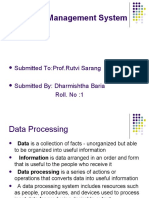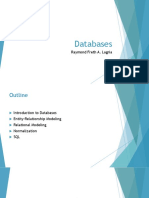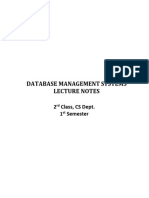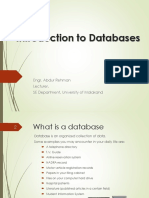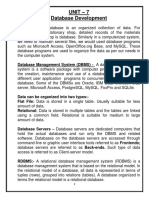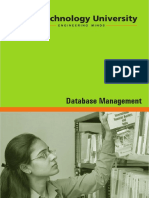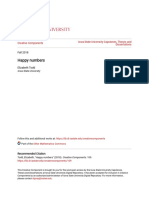0% found this document useful (0 votes)
56 views23 pages02 - 03 Database - Vs - File System
This lesson discusses database management systems and includes the following sections:
1. The difference between databases, which are repositories for data, and DBMSes, which are software tools that allow users to work with databases.
2. An overview of flat-file databases, which have one table, and relational databases, which have multiple related tables.
3. The tasks involved in working with databases, including creating tables, viewing and sorting records, querying data, and generating reports.
Uploaded by
Shobhit LasodCopyright
© Attribution Non-Commercial (BY-NC)
We take content rights seriously. If you suspect this is your content, claim it here.
Available Formats
Download as PPT, PDF, TXT or read online on Scribd
0% found this document useful (0 votes)
56 views23 pages02 - 03 Database - Vs - File System
This lesson discusses database management systems and includes the following sections:
1. The difference between databases, which are repositories for data, and DBMSes, which are software tools that allow users to work with databases.
2. An overview of flat-file databases, which have one table, and relational databases, which have multiple related tables.
3. The tasks involved in working with databases, including creating tables, viewing and sorting records, querying data, and generating reports.
Uploaded by
Shobhit LasodCopyright
© Attribution Non-Commercial (BY-NC)
We take content rights seriously. If you suspect this is your content, claim it here.
Available Formats
Download as PPT, PDF, TXT or read online on Scribd
/ 23





